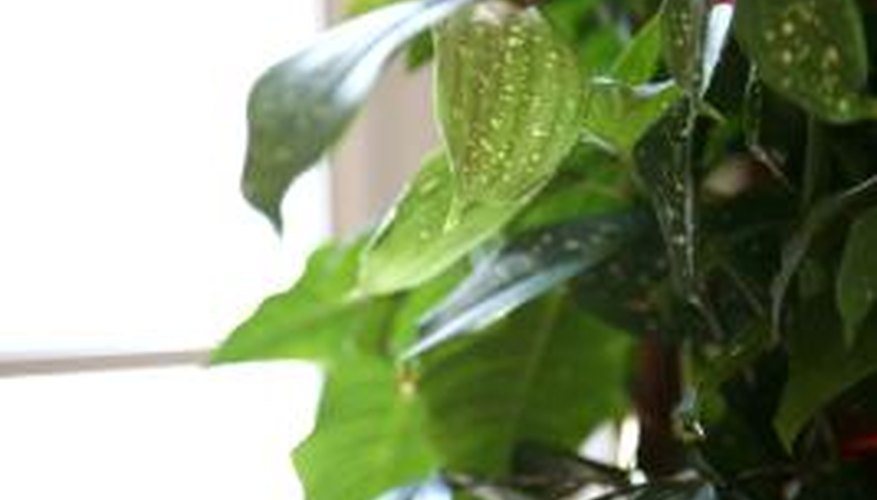Devil's ivy (Epipremnum aureum) is a tropical foliage plant desirable for its ornamental leaves. Also called pothos, devil's ivy is often grown as an indoor plant and is easy to care for, according to the University of Oklahoma's Plant of the Week website. The leaves are normally marked with silver or gold variegations, depending on the species and cultivar, but unattractive brown or black spots on the leaves are not normal and signify a more serious problem.
Causes
Unattractive spots on the leaves of devil's ivy plants are usually caused by bacteria or fungi. Both the bacteria and fungal spores spread on water, such as windblown rain or overhead irrigation. As the water sits on the leaves, the bacteria and fungi infect the leaves, rapidly growing and spreading. Bacteria is also sometimes carried onto the leaves on the bodies of common insect pests such as aphids. Brown, dry patches in the centres of the leaves are often caused by low temperatures.
- Unattractive spots on the leaves of devil's ivy plants are usually caused by bacteria or fungi.
- Both the bacteria and fungal spores spread on water, such as windblown rain or overhead irrigation.
Symptoms
Bacterial leaf spot presents as very wet-looking spots on the leaves. Some may have a yellow halo, or border. As the spots grow larger, they merge and some may have centres that fall out, especially if they are very wet. Fungal leaf spots may be brown, black, tiny or large. They too may merge, and in severe cases, the entire leaf may turn brown and fall off.
- Bacterial leaf spot presents as very wet-looking spots on the leaves.
- As the spots grow larger, they merge and some may have centres that fall out, especially if they are very wet.
Treatment
Leaf spots are unattractive, but unlike root fungal and other diseases, they do not usually pose a serious health threat to the plant. Prune away or pluck off infected leaves to prevent the fungal spores or bacteria from spreading. Spraying your plant with a fungicide may also reduce the severity of the diseases, although this will not help if the cause is bacterial.
Prevention
Prevent leaf spot diseases by always watering at the surface level of the soil. This will keep the leaves dry. Outdoor plants should be located where they will receive morning sunlight, which will quickly dry the dew from the leaves. Finally, leave plenty of room for air to circulate around your plant, which will also help it stay dry.
- Prevent leaf spot diseases by always watering at the surface level of the soil.
- Outdoor plants should be located where they will receive morning sunlight, which will quickly dry the dew from the leaves.
